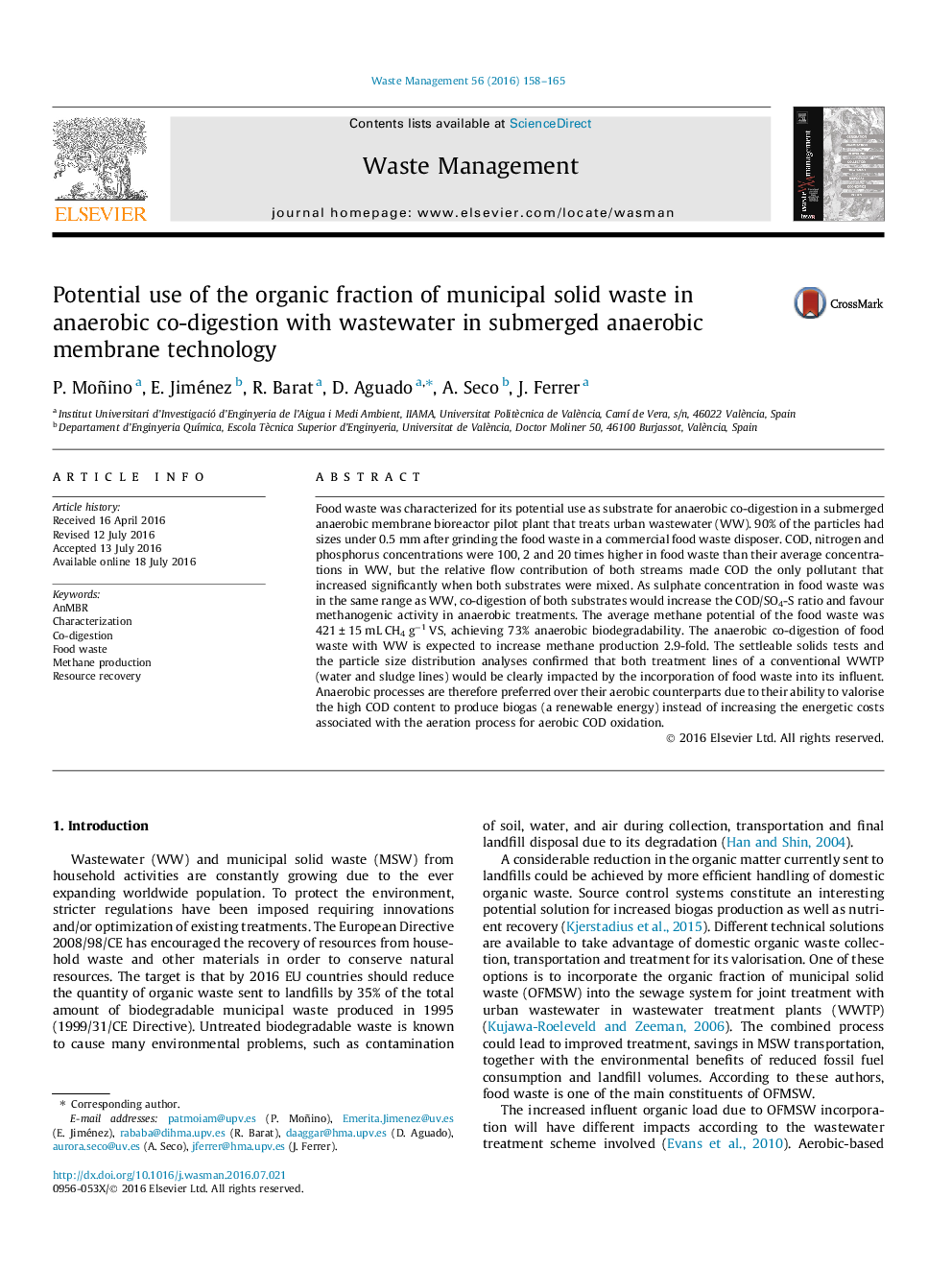| کد مقاله | کد نشریه | سال انتشار | مقاله انگلیسی | نسخه تمام متن |
|---|---|---|---|---|
| 4471124 | 1622630 | 2016 | 8 صفحه PDF | دانلود رایگان |
• Food waste composition is suitable for joint treatment with wastewater in AnMBR.
• 90% of the particles had sizes under 0.5 mm after grinding, exhibiting COD > 59 g L−1.
• Biomethane potential (BMP) was 421 ± 15 mL CH4 g−1 VS with 73% of biodegradability.
• Anaerobic co-digestion of food waste with WW is expected to increase 2.9-fold methane production.
• Both treatment lines of conventional WWTP would be impacted if food waste is added.
Food waste was characterized for its potential use as substrate for anaerobic co-digestion in a submerged anaerobic membrane bioreactor pilot plant that treats urban wastewater (WW). 90% of the particles had sizes under 0.5 mm after grinding the food waste in a commercial food waste disposer. COD, nitrogen and phosphorus concentrations were 100, 2 and 20 times higher in food waste than their average concentrations in WW, but the relative flow contribution of both streams made COD the only pollutant that increased significantly when both substrates were mixed. As sulphate concentration in food waste was in the same range as WW, co-digestion of both substrates would increase the COD/SO4-S ratio and favour methanogenic activity in anaerobic treatments. The average methane potential of the food waste was 421 ± 15 mL CH4 g−1 VS, achieving 73% anaerobic biodegradability. The anaerobic co-digestion of food waste with WW is expected to increase methane production 2.9-fold. The settleable solids tests and the particle size distribution analyses confirmed that both treatment lines of a conventional WWTP (water and sludge lines) would be clearly impacted by the incorporation of food waste into its influent. Anaerobic processes are therefore preferred over their aerobic counterparts due to their ability to valorise the high COD content to produce biogas (a renewable energy) instead of increasing the energetic costs associated with the aeration process for aerobic COD oxidation.
Journal: Waste Management - Volume 56, October 2016, Pages 158–165
